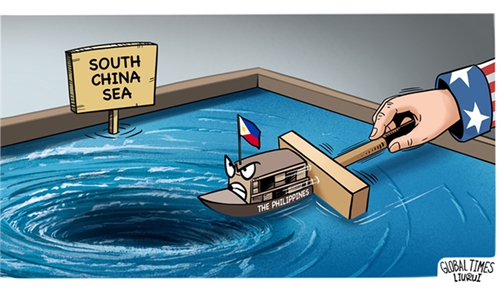
Illustration: Chen Xia/GT
The China-Cambodia "Golden Dragon 2025" joint exercise kicked off on the morning of May 17. Under the theme of "peace, friendship, and cooperation," this year's joint exercise focuses on the topic of joint counter-terrorism and humanitarian relief operations.
The "Golden Dragon" joint military exercise began in 2016 and has been held seven times so far, becoming a regular activity for military exchanges between China and Cambodia and a symbolic representation of the friendship between the two countries. Unlike previous years, this joint exercise is the first to rely on the China-Cambodia Ream Port Joint Support and Training Center for maritime operations.
Ream Port is located in the Gulf of Thailand, about 1,000 kilometers away from the Strait of Malacca and about 1,000 kilometers from the Nansha Qundao. It holds an extremely important strategic position. For this reason, since China's participation in the construction of the Ream Port Joint Support and Training Center, the US has always hyped that China intends to build an overseas military base in Ream.
In April this year, the China-Cambodia Ream Port Joint Support and Training Center was officially put into use. Cambodian Prime Minister Hun Manet clearly stated there was "nothing to hide" and welcomed all friends to hold joint exercises in the Ream base. Cambodia also invited the US Chargé d'Affaires to Cambodia, Bridget Walker, to attend the opening ceremony of the center.
This time, Cambodia also invited military attachés from the US, Russia, France, Germany and Japan, among other countries, to observe the China-Cambodia joint military exercise, fully demonstrating the openness of the exercise and dispelling the false information fabricated by the US that the Ream Naval Base was "exclusively" used by China.
In addition, this joint military exercise aims to strengthen multi-level exchanges and cooperation, enhance joint counter-terrorism combat capabilities, and strengthen actual combat response and coordination mechanisms in the field of emergency humanitarian rescue. A Cambodian military spokesperson said that the drill was not aimed at, nor did it threaten, any country.
In recent years, joint military exercises between China and ASEAN countries have become increasingly regular, and defense cooperation has gradually entered a deepening stage. Before the China-Cambodia joint military exercise, China and Singapore held the China-Singapore Exercise Cooperation 2025 joint maritime exercise at the Changi Naval Base, and China and Thailand held the Blue Strike-2025 joint naval training. Even earlier, China also held joint maritime exercises with several ASEAN countries.
This indicates that both China and ASEAN countries have the need to strengthen military exchanges. It also demonstrates the efforts of China and ASEAN to jointly maintain regional peace and stability.
In contrast, the US-Philippine "Balikatan" military exercise is a real "show of muscle." Not only are the themes and subjects of the exercises full of "offensive implications," but the number of troops participating in the exercises has also repeatedly broken records. This kind of military exercise will only intensify regional security conflicts and undermine regional peace and stability.
In short, the US should not always look at the joint military exercises between China and ASEAN countries through tinted glasses.
Unlike the US, most of the joint military exercises between China and ASEAN countries focus on low-sensitivity areas of practical maritime cooperation, such as joint counter-terrorism, joint search and rescue, and maritime rescue. These military exercises will not deteriorate the regional security situation or trigger a regional arms race. However, they can help enhance military mutual trust between China and ASEAN countries, contribute to combating non-traditional security threats in the region, and help maintain regional peace and stability. From this perspective, the more of these "peaceful" military exercises, the better.
The US should reflect on itself, stop imagining China's joint military exercises with neighboring countries as China's "military expansion," and focus more of its attention on matters that can promote regional peace, stability and development.
The author is director of the Hong Kong Research Center for Asian Studies. opinion@globaltimes.com.cn



